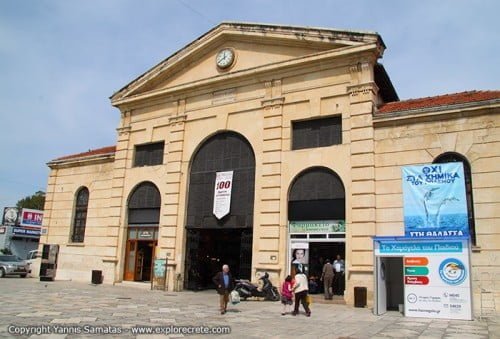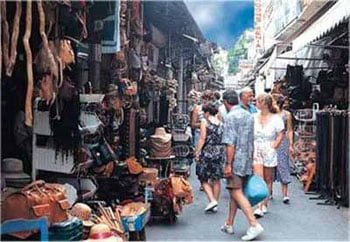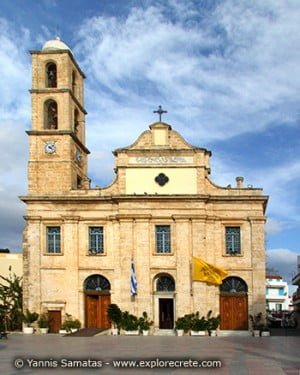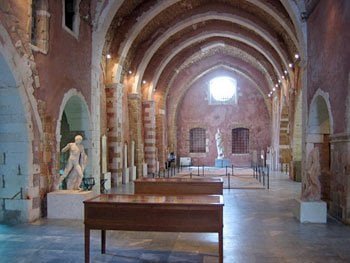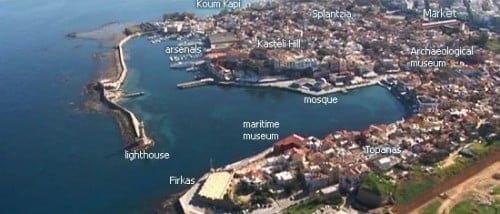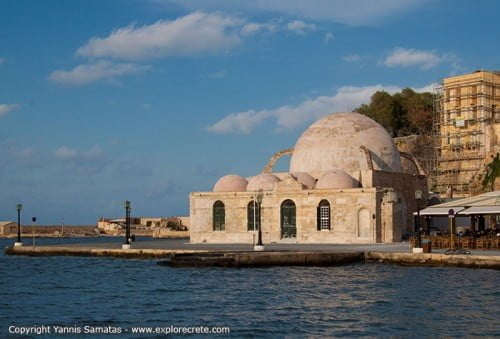Chania, Crete
The city of Chania in Western Crete
Chania, beautiful city
“Chania is a beautiful city. The most beautiful in Crete, one might even say in the whole of Greece. Chania has a natural, privileged, well-protected beauty. Sleepless guardians to the south stand the gigantic Madares mountains in all their indestructible, panoramic glory. To the north stretches the multicoloured immensity of the Sea of Crete, embraced by its gorgeous, long-armed capes. And all around lies its land, scarlet and green-haired, sown with wild silver gorges. A land that seems to be made flesh, so spirited and alive that you hesitate to tread on it.” Manolis Skouloudis, Athens 1974
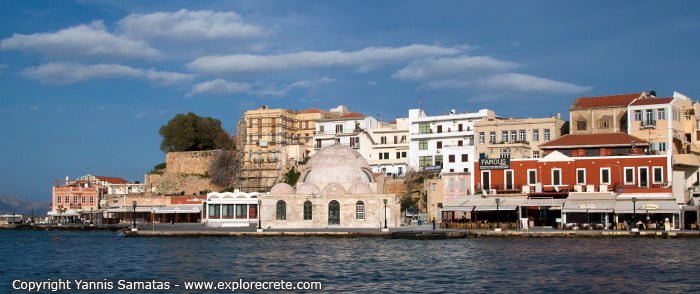
Location
Chania lies on the north coast of west Crete and is the capital of Chania Prefecture, which covers the westernmost end of Crete and features a combination of many beautiful beaches, small fertile plains, high mountains and deep gorges, such as the Samaria Gorge. The region of Chania is the greenest part of the island, as the range of the White Mountains ensures the highest rainfall in Crete.

Chania is one of the oldest cities in Crete, with a rich and tumultuous history. Today it is the second most populated city on the island, a city which has preserved its traditional architecture and most of its monuments from Venetian and Turkish times. The Venetian harbour with its lighthouse and the old town in the centre have bestowed on Chania the reputation of the most picturesque city in Crete, welcoming thousands of visitors each year.
Chania does not lag behind in modern developments, as it is home to the Technical University of Crete and other educational establishments. It also offers many and varied cultural events and amusements.
How to travel to Chania
You can travel to Chania by plane on domestic flights from other Greek airports, or on international charter flights from many European countries. Chania Airport, or “Ioannis Daskaloyannis Airport” as it is officially known, is on the Akrotiri peninsula, 14 kilometres west of the city and connected to it by bus and taxi.
There are also daily ferries from Piraeus to Souda Bay, 7 kilometres east of the city. The trip from Piraeus takes about 10 hours and ferries leave in the evening (9 p.m.) and arrive early in the morning (5:30 a.m.) Passengers can sleep in a cabin or in comfortable aeroplane-type seats (cheaper tickets), while there are restaurants and cafes on board. In the summer months there are also daytime crossings.
There are also super fast ferries all year round, travelling to and from Chania in about 4.5 hours, leaving at 4.30 pm and arriving at 8.30 pm.
The new town of Chania
You could say that Chania consists of two towns, the old and the new, which coexist in a harmonious whole. The new town embraces the old and spreads outwards ever wider. Its layout is fairly good near the centre and it’s easy to find your way around. Unfortunately this changes in the suburbs, where it’s easy to get lost. It is commonly observed that its is very easy to find your way into Chania but much harder to get out. Of course, you may not want to leave, as Chania is a city that will enchant you.
The old town of Chania
The heart of Chania is still the old town, with its narrow, labyrinthine alleyways and listed buildings dating from different periods, where you can enjoy romantic strolls. Many of these buildings have been turned into small hotels, restaurants, shops or homes.
Don’t hesitate to wander round the alleys of the old town, looking for the lovely images that await you. Your camera must be your inseparable companion, as Chania is one of the most-photographed cities in Greece.
The old town stretches out parallel to the Venetian harbour, from Firkas Fortress and the Maritime Museum to the “Pyli tis Ammou” (Gate of the Sand, or Koum Kapi in Turkish) to the east of the arsenals. This is the part of town within the Venetian walls and includes Byzantine Chania, once enclosed within less extensive walls.
The Byzantine walls protected the fortress of Kastelli, the hill which was first inhabited in the Neolithic period.
Kastelli Hill rises above the Turkish mosque in the Venetian harbour. Here stood the acropolis of ancient Kydonia, the Minoan Chania. There, too, was built the first Byzantine fortress, the Kastelli, surrounded by walls with many towers and bastions. The Venetians established their headquarters there in 1252, building the Rector’s Residence (the Rector was the Governor of Chania), while the same site was the seat of the pashas during the Turkish Occupation. During the last years of Turkish rule, the Christian aristocracy lived inside the Kastelli. Unfortunately most of the district was destroyed by bombing during the Second World War, and its medieval aspect was lost forever. Today only the base of the north wall remains. There is also the main road that once ran through the Kastelli, modern-day Kanevaro Street with its imposing mansions.
Tour of Chania
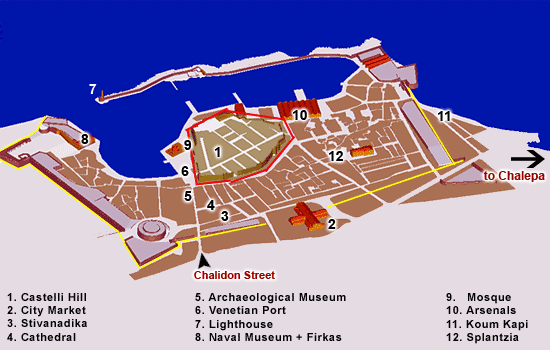
Our tour of Chania will start at the Municipal Market in the centre of town. We will then enter the old town and head towards the Venetian harbour. We will walk the length of the harbour to the Gate of the Sand and return through the alleyways of the Splantzia to our starting-point. Of course this tour is only intended to give you a rough idea, and it would better if you did it in sections over two or more days, so you can take your time.
- Chania Municipal Market
- Stivanadika
- Chania Cathedral of Panagia Trimartyri
- Archaeological Museum of Chania. After visiting the museum, continue down Halidon Street to Sindrivani Square in the Venetian harbour. From here you can walk left along the jetty to the Maritime Museum.
Alternatively, after the museum turn left into Zambeliou Street and stroll along it, enjoying the magic of the alleyways of the old town. Walk right down Zambeliou Street, continue along Theotokopoulou Street and turn right into Angelou Street until the Maritime Museum. - Venetian harbour
- Maritime Museum of Chania, the Firkas Fortress and the Topanas district.
- Yiali Tzami, the Turkish Mosque in the Venetian harbour of Chania
- Venetian Shipyards or Arsenals
- Koum Kapi
- Splantzia, from the Splantzia you come back to the Municipal Market, where we began our tour of the old town of Chania.
- Chalepa: the district of Chalepa is at the eastern limits of the town and it would be best if you visited it separately as it is quite far. For example, Eleftherios Venizelos’ house is about a kilometre from Koum Kapi.
- Venizelos Tombs on Akrotiri
For your tour of Chania you can either use the map above, or a very detailed map of the old town of Chania.
© explorecrete.com All Rights Reserved. Reproduction or copying without permission is prohibited.

